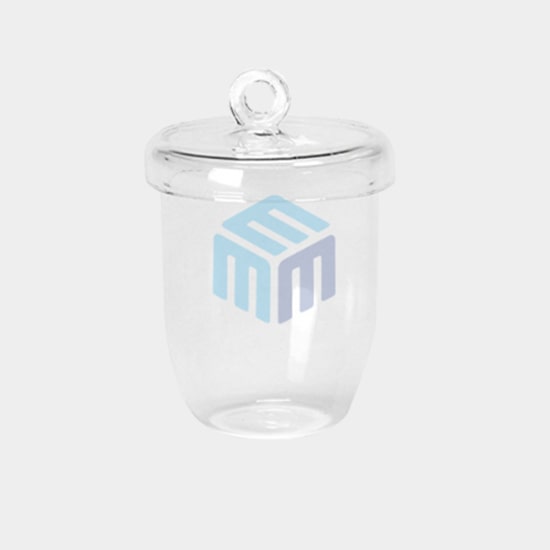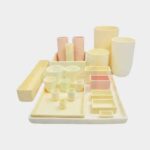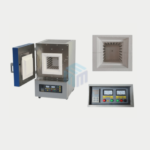When it comes to high-precision, high-temperature processes in the semiconductor and solar photovoltaic (PV) industries, high-purity quartz crucibles are an indispensable component. Their unmatched purity, thermal resistance, and chemical stability make them the gold standard for crystal growth, wafer production, and silicon processing.
What Is a High-Purity Quartz Crucible?
A high-purity quartz crucible is a container made from fused quartz (SiO₂), with purity levels typically exceeding 99.99%. Fused quartz crucibles are designed to handle extremely high temperatures while maintaining a contaminant-free environment—critical in industries where material purity is non-negotiable.
Why Quartz Crucibles Are Essential in the Semiconductor Industry
In semiconductor fabrication, ultra-pure silicon crystals must be grown using the Czochralski (CZ) process. During this process, molten silicon is held in a quartz boat crucible while a seed crystal is slowly pulled from the melt.
Quartz is ideal for this due to:
- Minimal impurity levels that won’t dope or degrade the silicon
- High thermal endurance, resisting temperatures above 1400°C
- Dimensional consistency, ensuring predictable results
Without high-purity quartz crucibles, producing defect-free wafers for chips and processors would be virtually impossible.
Role of Quartz Crucibles in Solar Photovoltaic (PV) Applications
In the solar PV industry, mono-crystalline and polycrystalline silicon ingots are manufactured using fused quartz crucibles. These ingots are sliced into wafers, forming the base of most solar panels.
Key benefits in PV use:
- Cost-effective scalability
- Resistance to solar-grade silicon contaminants
- Reusable for multiple casting cycles (with care)
High-purity quartz crucibles directly contribute to higher energy yields and longer-lasting solar panels. Read also: Benefits and Uses of Quartz Crucibles
Key Properties of High-Purity Quartz Crucibles
High-purity quartz crucibles offer excellent thermal stability, low thermal expansion, and high resistance to chemical corrosion. Their exceptional purity minimizes contamination, making them ideal for high-temperature applications like semiconductor and photovoltaic manufacturing.
High Thermal Resistance
Fused quartz crucibles can withstand temperatures over 1700°C, making them suitable for the extreme demands of crystal growth and metal melting.
Chemical Inertness
Quartz is resistant to most acids, alkalis, and fluxes, ensuring your melt remains pure throughout the process.
Dimensional Stability
Even under thermal cycling, quartz crucibles maintain shape, reducing stress points and increasing operational reliability.
Benefits of Using Quartz Crucibles in High-Temperature Environments
Quartz crucibles provide excellent thermal shock resistance and can withstand high temperatures without deforming or contaminating the contents. Their transparency and chemical inertness make them ideal for precise, clean processes in high-temperature environments.
- Ultra-clean processing for semiconductors and PV materials
- Low thermal expansion, minimising risk of cracks or deformation
- Excellent insulation, reducing heat loss and improving efficiency
- Non-reactive and transparent, making visual monitoring possible
These qualities make quartz crucibles superior for both research and large-scale production.
How High-Purity Quartz Crucibles Are Manufactured
Manufacturing involves:
- Purifying natural quartz sands
- Melting the quartz in electric arc furnaces
- Forming the crucibles through rotation or pressing techniques
- Annealing to remove internal stress
The entire process is carefully controlled to minimise impurities and achieve optimal structural integrity.
Comparing Quartz Crucibles with Other Crucible Materials
When selecting a crucible for high-temperature applications, it’s important to understand how different materials perform under various conditions. Comparing quartz crucibles with alternatives like alumina, graphite, or ceramic helps determine the best fit for specific thermal, chemical, and purity requirements.
Quartz vs. Alumina
- Quartz offers higher purity and transparency; ideal for semiconductor processes.
- Alumina provides better mechanical strength but may introduce impurities in ultra-pure environments.
Quartz vs. Graphite
- Quartz is chemically inert; graphite is more thermally conductive but prone to oxidation.
- Graphite is better for metal casting, while quartz is preferred in silicon processing.
Quartz vs. Silicon Carbide
- SiC crucibles are stronger and last longer in metal foundries.
- Quartz crucibles excel where ultra-high purity is essential (e.g., crystal growth, photovoltaics).
Tips for Choosing the Right Quartz Crucible for Your Application
When choosing a quartz crucible, consider factors such as the required temperature range, crucible size, purity level, and compatibility with the materials being processed. Ensure the crucible meets your thermal and chemical resistance needs for optimal performance and longevity.
- Match the crucible shape to the process: cylindrical, conical, or custom.
- Check purity specifications (e.g., 99.99% or higher for semiconductors).
- Choose wall thickness based on thermal cycling requirements.
- Opt for trusted suppliers in Australia to ensure consistent quality and delivery.
Common Challenges and How to Maintain Quartz Crucibles
Common challenges with quartz crucibles include thermal shock, contamination, and gradual degradation at high temperatures. To maintain them, avoid rapid temperature changes, handle with clean tools, and regularly inspect for cracks or residues to extend their lifespan and ensure consistent performance.
Challenges:
- Fragility under rapid thermal shock
- Silica layer degradation over multiple uses
- Risk of contamination from handling
Maintenance Tips:
- Preheat slowly to avoid thermal cracks
- Clean only with approved solvents and tools
- Avoid mechanical abrasion or scraping
Proper handling extends the crucible’s lifespan and maintains purity across batches.
Industries That Rely on High-Purity Quartz Crucibles
High-purity quartz crucibles are essential in industries such as semiconductor manufacturing, solar photovoltaic production, and optical fiber fabrication. These sectors rely on their thermal stability and purity to ensure precise, contamination-free processing of sensitive materials.
Semiconductor Fabrication Plants
Used in CZ crystal growth, epitaxial deposition, and diffusion processes.
Solar Panel Manufacturing Units
Key to casting solar-grade silicon ingots with low contamination risk.
Optical Component Producers
Used in high-purity glass melting for lenses, waveguides, and fibre optics.
Conclusion:
In conclusion, high-purity quartz crucibles play a vital role in the semiconductor and solar PV industries, where precision, cleanliness, and thermal stability are paramount. Their ability to withstand extreme conditions while maintaining material purity makes them indispensable for producing high-performance electronic and photovoltaic components.
FAQs
What is a high-purity quartz crucible used for?
They are used in semiconductor wafer production, solar PV silicon ingot casting, and optical glass processing.
Why is quartz preferred in the semiconductor industry?
Due to its ultra-high purity, chemical inertness, and thermal resistance, quartz ensures clean, defect-free silicon crystal growth.
How is a high-purity quartz crucible different from regular crucibles?
High-purity quartz crucibles are manufactured from fused silica, offering significantly higher purity and resistance to high temperatures compared to ceramic or graphite crucibles.
Are quartz crucibles suitable for solar PV production?
Yes. Quartz crucibles are standard in casting monocrystalline and multicrystalline silicon for solar cells.
How to maintain or clean a quartz crucible?
Use mild solvents and avoid mechanical cleaning. Ensure gradual heating and cooling to avoid thermal shock.
Where can I buy high-purity quartz crucibles for semiconductor or solar use?
You can source high-quality fused quartz crucibles—including cylindrical quartz crucibles—from reliable quartz crucibles suppliers in Australia like M-Kube Enterprise, which specialises in high-purity labware and technical ceramics.






